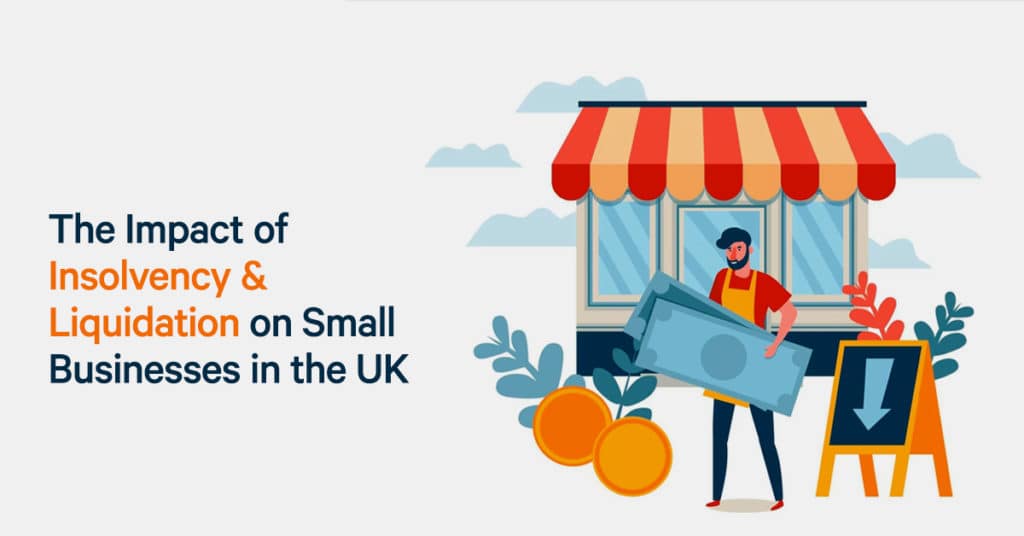Many businesses face challenges, and these challenges vary depending on what market that business operates in and what the market is like currently. Usually, businesses can overcome various challenges; however, this isn’t always the case, and some organisations enter insolvency and have to go into liquidation. The question is, what do these two terms actually mean, and the impact of Insolvency and Liquidation on Small Businesses? All will be discussed in more detail throughout the below article.
What Does Insolvency Mean?
When a business becomes insolvent, it means that an organisation cannot pay the various debts they owe as they fall due. This can happen in two different ways, but both can happen at the same time.
The first form of insolvency is cash-flow insolvency, where a business simply doesn’t have access to enough money to pay off its debts. This is easy for businesses to fall into but, similarly, it’s easy to get out of. Many businesses sell some of their assets or negotiate some kind of debt extension with their creditors to improve the situation.
The second kind of insolvency is more serious and is called balance-sheet insolvency. This is where the amount of debt your company has totals more than your overall assets. You may have some cash so you can pay some creditors but not all of them, but insolvency law stops you from doing this. This is called ‘trading while insolvent.’ Generally speaking, the usual procedure when a business becomes bank sheet insolvent is to stop trading immediately and instead address the insolvency problem.
What Impact Will Insolvency Have?
The impact that insolvency has on a business depends on the circumstances of the business. The way that organisations are structured can lead to individuals being more personally exposed, whereas others provide levels of protection.
- Sole Trader
If you are operating as a sole trader, it means that you are personally not able to pay both business and personal debts. This usually means that you will need to close your business and sell assets to pay off the debts you owe; it could also mean declaring bankruptcy. Going bankrupt can be an effective way to resolve insolvency problems, but it does come with disadvantages, so be sure to think carefully about this decision.
- Limited Company
There are a few different ways that limited company insolvency can take place.
One form is voluntary liquidation, which means that you appoint an insolvency practitioner to sell your organisation’s assets and take steps towards closing your business. The money made from selling assets will be used to pay off creditors with outstanding debts. Once the company closes, any debts which are still outstanding will be written off.
If your business cannot afford voluntary liquidation as you cannot afford an insolvency practitioner, the next best option will be compulsory liquidation. The court needs to approve this and they will be responsible for appointing a liquidator. This is the less advisable option as you will want to appoint a liquidator who will act in the interests of your creditors and your business, not to mention, investigations into the operation of your business will be more thorough if compulsory liquidation is sought.
- Partnerships
Finally, when a partnership becomes insolvent, the individual partners are asked to pay the debts. If one of the partners cannot pay their share of the debt they may have to declare bankruptcy. If the debts in question were incurred before joining the partnership or once you left the partnership then you would not be liable.
This won’t apply if you are in a limited liability partnership and, instead, the partnership will go down the company route of liquidation.
What is Liquidation?
So, what actually is liquidation? In economics and finance, liquidation is the process of bringing a business to a close after selling and distributing the tangible and intangible assets of said business. As stated above, this is the process followed when a company becomes insolvent, meaning it is no longer in a position where it can pay off all the debts that it owes. The assets that are sold will be used to pay off different creditors and shareholders depending on the priority of their claims.
What is the Liquidation of an Insolvent Company?
The liquidation of an organisation is where all of the assets owned by said organisation are sold off and the company then ceases any kind of trading and is closed. The assets need to be sold, both physical and non-physical, so the money made from them can be sold to pay off the various debts of the company. Common assets sold include company vehicles, any property that the company might own (such as offices), stocks, shares and any surplus stock that might be left over. The process can be quite complex and, as such, it is a good idea to sit down with different liquidators and ensure you are working with someone who can explain the process to you and will be working with your best interests in mind.
Are You Looking for a Liquidator?
If you are currently looking for a liquidator or an advisor who can answer any questions you have and guide you through the process, you should consider reaching out to Simple Liquidation. Our team of experts will sit down with you to discuss your business and your current situation and what you would like to do moving forward. Using this information, we can provide you with plenty of help and update you on how you should progress in the interests of both your business and your creditors. If you have any questions, do not hesitate to get in touch.




